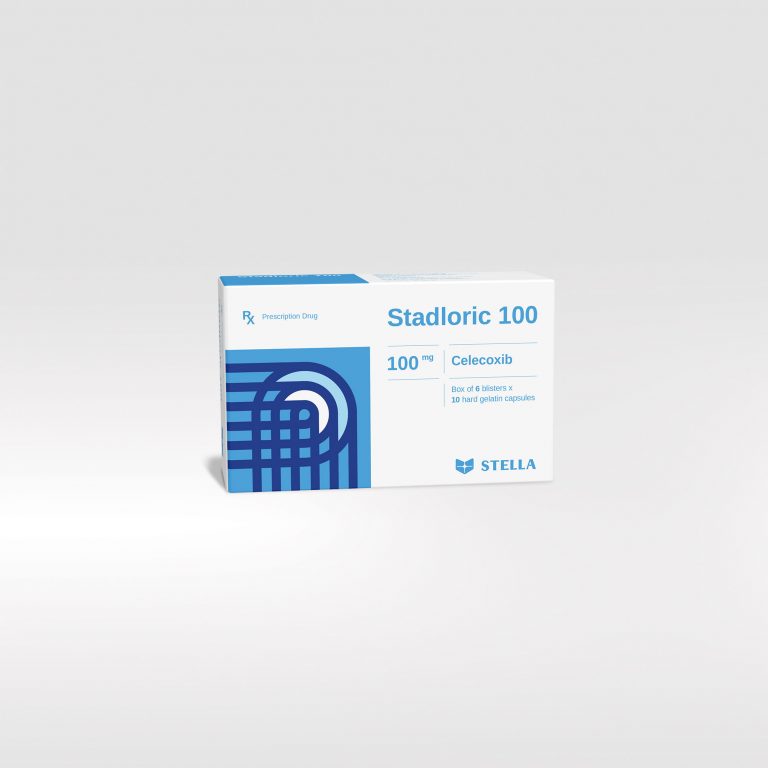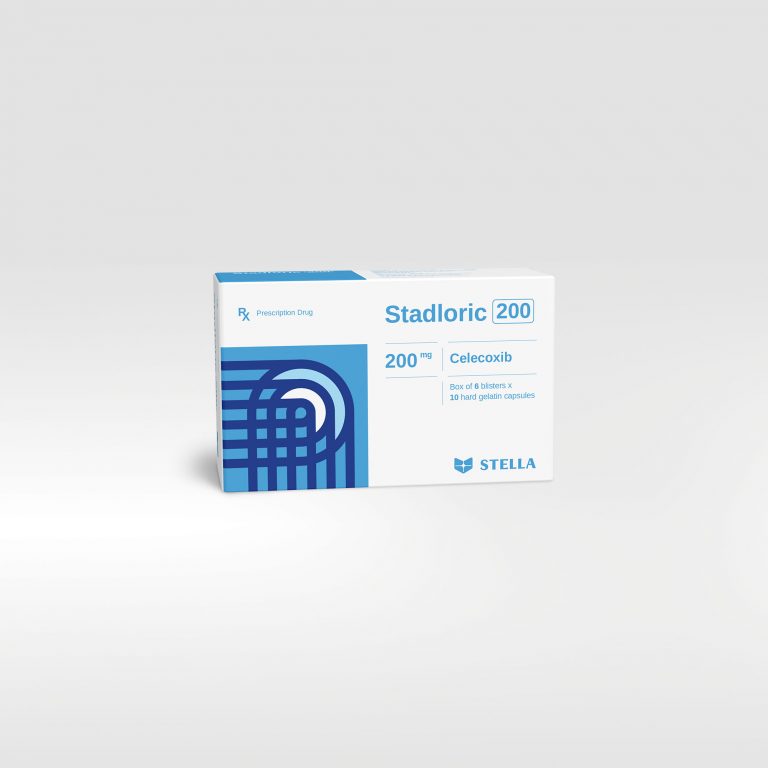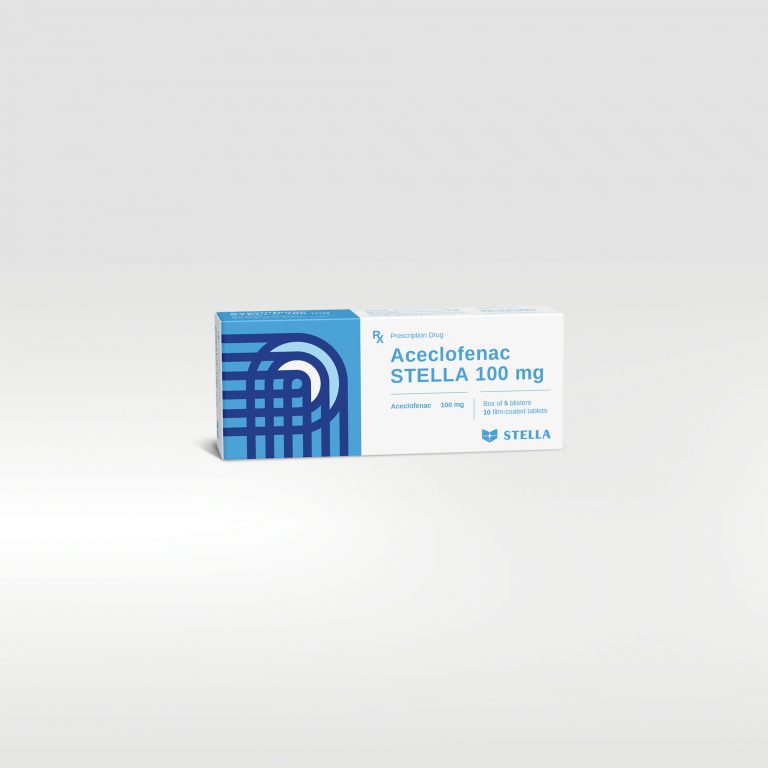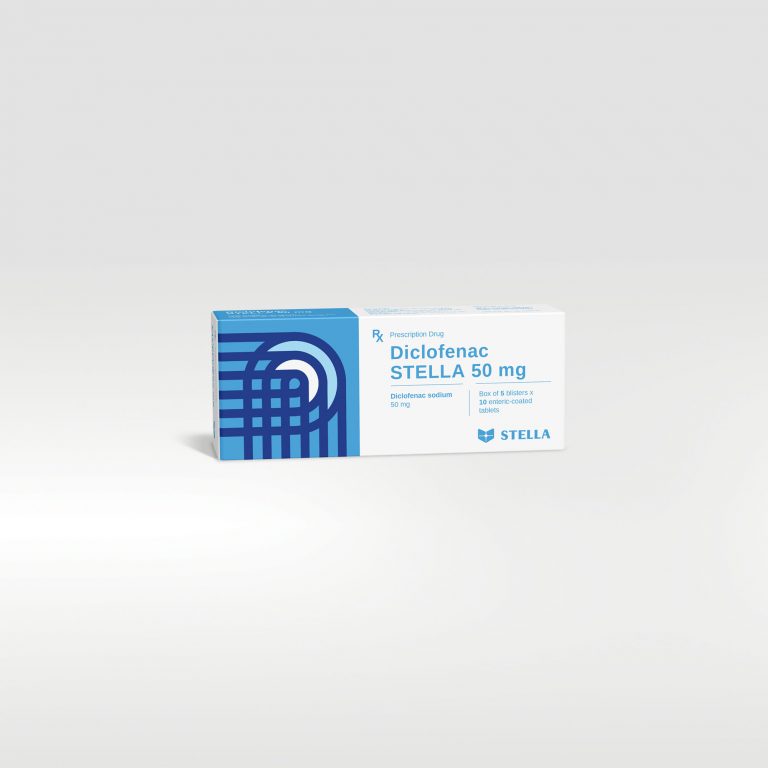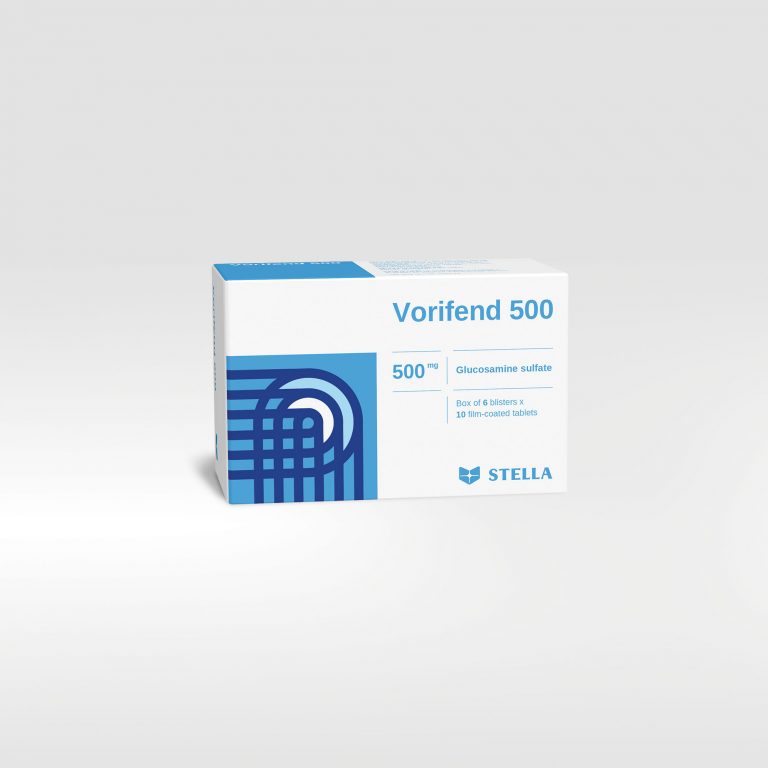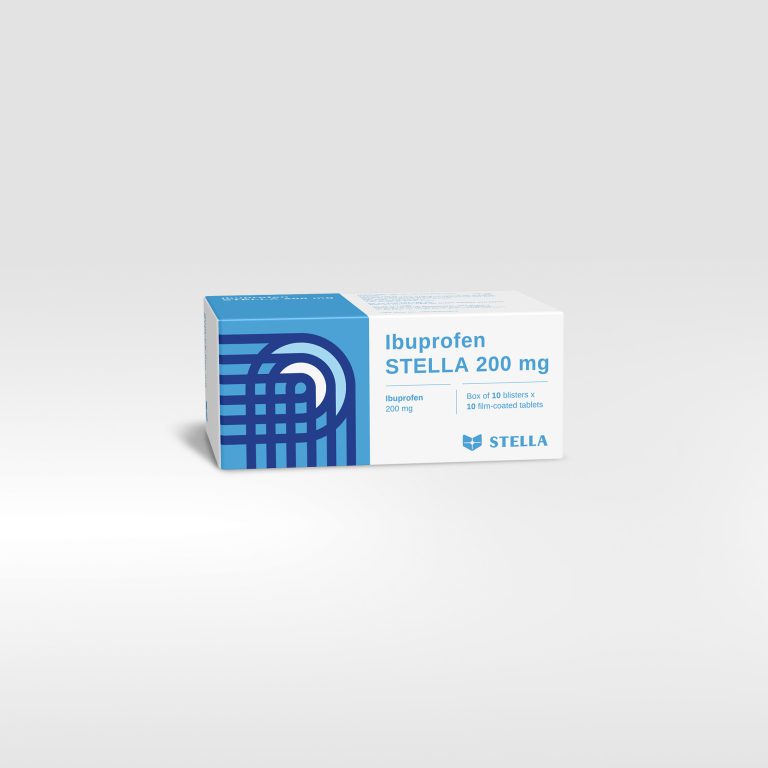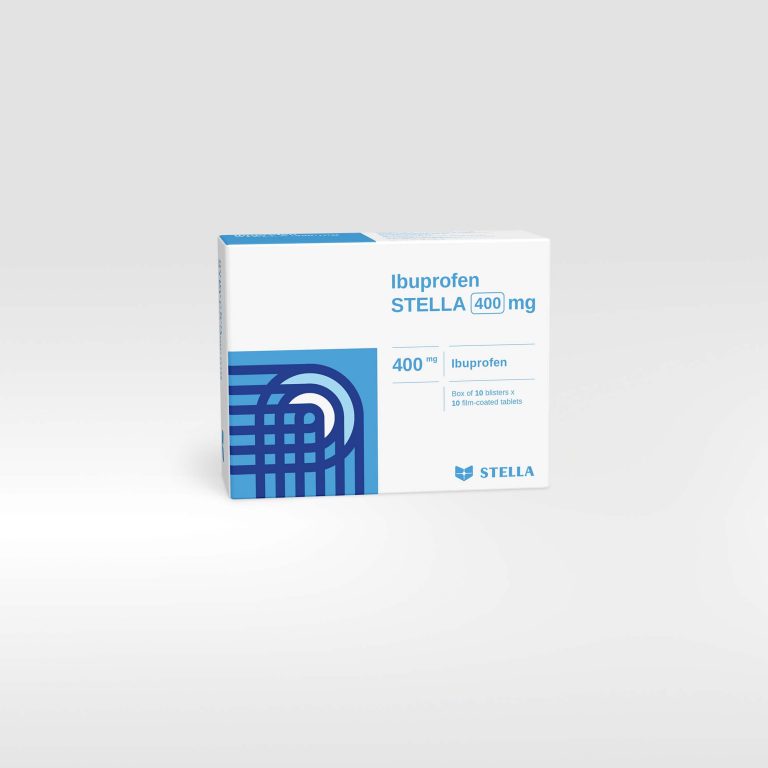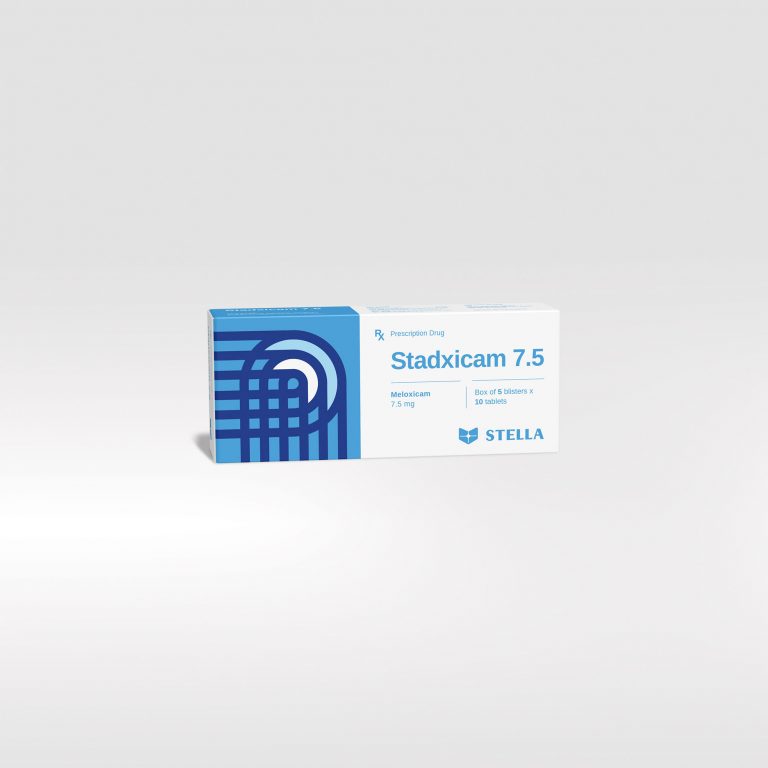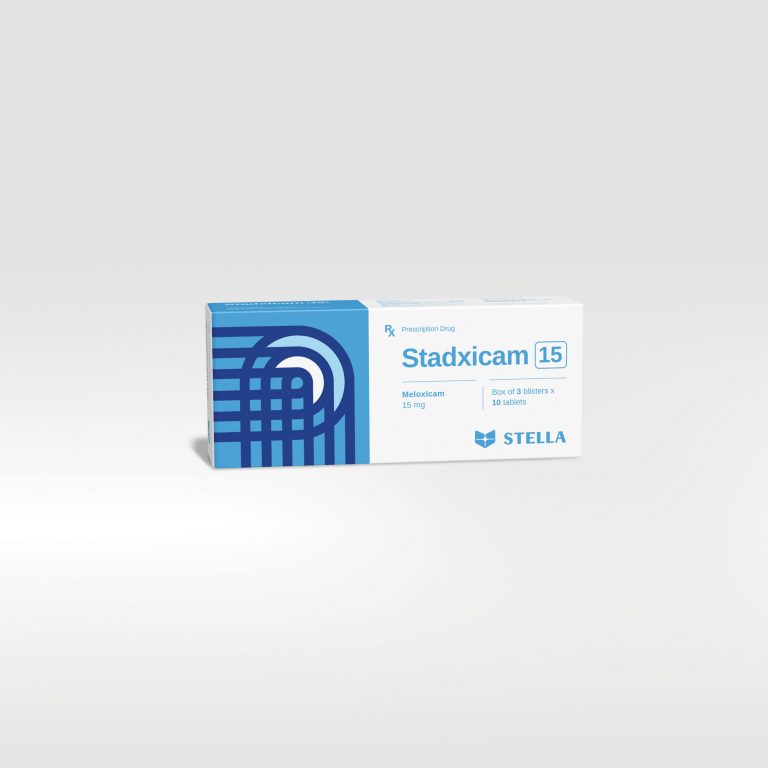Indications
- Symptomatic treatment of osteoarthritis (OA) and rheumatoid arthritis (RA).
- Relief the signs and symptoms of juvenile idiopathic arthritis (JIA) in patients ≥ 2 years of age weighing ≥ 10 kg.
- Relief the signs and symptoms of ankylosing spondylitis.
- Management of acute pain.
- Treatment of primary dysmenorrhoea.
Dosage
Adults
- Symptomatic treatment of osteoarthritis (OA): The recommended dose of celecoxib is 200 mg administered as a single dose or as 100 mg twice per day.
- Symptomatic treatment of rheumatoid arthritis (RA): The recommended dose of celecoxib is 100 mg or 200 mg twice per day.
- Ankylosing spondylitis (AS): The recommended dose of celecoxib is 200 mg administered as a single dose or 100 mg twice per day. Some patients may benefit from a total daily dose of 400 mg.
- Management of acute pain: The recommended dose of celecoxib is 400 mg, initially, followed by an additional 200 mg dose, if needed on the first day. On subsequent days, the recommended dose is 200 mg twice daily, as needed.
- Treatment of primary dysmenorrhoea: The recommended dose of celecoxib is 400 mg, initially, followed by an additional 200 mg dose, if needed on the first day. On subsequent days, the recommended dose is 200 mg twice daily, as needed.
Elderly
- Elderly patients with a lower than average body weight (< 50 kg), it is advisable to initiate therapy at the lowest recommended dose.
Pediatric population
Juvenile idiopathic arthritis (JIA)
- Children ≥ 2 years of age weighing ≥ 10 kg to ≤ 25 kg, the recommended dose is 50 mg twice daily.
- Children ≥ 2 years of age weighing > 25 kg, the recommended dose is 100 mg twice daily.
- The use of celecoxib in patients 2 to 17 years of age with juvenile idiopathic arthritis (JIA) was studied.
Hepatic impairment
- No dosage adjustment is necessary in patients with mild hepatic impairment (Child-Pugh Class A). Introduce celecoxib at half the recommended dose in arthritis or pain patients with moderate hepatic impairment (Child-Pugh Class B).
Renal impairment
- No dosage adjustment is necessary in patients with mild or moderate renal impairment. There is no clinical experience in patients with severe renal impairment.
CYP2C9 poor metabolisers
- Patients who are known, or suspected to be CYP2C9 poor metabolisers based on genotyping or previous history/experience with other CYP2C9 substrates should be administered celecoxib with caution as the risk of dose-dependent adverse effects is increased. Consider reducing the dose to half the lowest recommended dose.
Co-administration with fluconazole
- Celecoxib should be introduced at half the recommended dose in patients receiving fluconazole, a CYP2C9 inhibitor. Caution is advised when co-administering celecoxib with other CYP2C9 inhibitors.
Usage
Celecoxib is administered orally with or without food.
For patients who have difficulty swallowing capsules, the contents of a celecoxib capsule can be added to applesauce, rice gruel, yogurt or mashed banana. To do so, the entire capsule contents must be carefully emptied onto a level teaspoon of room temperature applesauce, rice gruel, yogurt or mashed banana and should be ingested immediately with water. The sprinkled capsule contents on applesauce, rice gruel or yogurt are stable for up to 6 hours under refrigerated conditions (2 – 8oC/35 – 45oF). The sprinkled capsule contents on mashed banana should not be stored under refrigerated conditions and should be ingested immediately.


